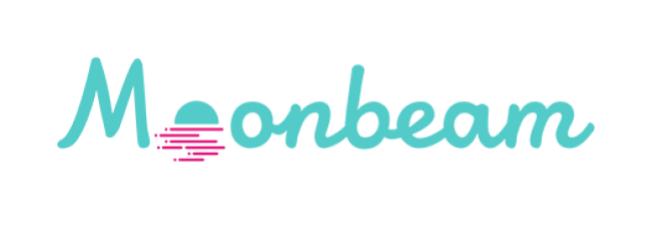
Fundamental Scorecard(all categories scored out of 10)
| Smart Money | Low Competition | Team | Use-Case | Investors |
| 10 | 5 | 8 | 9.00 | 7.56 |
| Distribution | Audit | ROI Potential | Tokenomics | Final Score |
| 8 | n/a | 8.00 | 9 | 81.31% |
Thesis
Moonbeam network is an EVM smart contract platform built on Polkadot. Using Moonbeam, Ethereum developers can port their dApps to Polkadot with little to no changes to their code. The unified accounts feature allows users to share a private key between EVM and substrate chains, making switching chains easier for both the user and developer. Moonbeam won the second para chain auction and had more DOT bonded than any other para chain – an indication that investors were the most bullish on Moonbeam during the auctions. Moonriver is Moonbeam’s test network, an ecosystem for developers to test their applications before deploying them to mainnet.
Despite launching on mainnet in January of this year, Moonbeam has already gained significant traction. Moonbeam and Moonriver rank number one and two in TVL for Polkadot parachains, both attracting $60M+ in value. The network has 34 DeFi protocols live on mainnet with 15 more testing on the Moonriver network. Moonbeam dApps include Ethereum-based protocols like Curve and Lido and Moonbeam native dApps like Moonwell, a P2P lending service.
The native token, GLMR, has strong demand-side tokenomics. GLMR is used to pay gas fees, incentivize validators to secure the network, facilitate on-chain governance, and support smart contract execution. 80% of transaction fees are burned and 20% go to the on-chain treasury. Moonbeam underwent steep token inflation due to unlocks at the beginning of the year – which coincided with the current bear market – causing the price to depreciate over 97% from its all-time high. This indicates Moonbeam could be undervalued.
Market Size & Compounding
Competition
- Evmos: Market cap $450M and $1.45B FDV
- Astar: Market cap $134M and $278M FDV
- The indirect competition includes layer-1 smart contract platforms like SOL, NEAR, and AVAX
The market for layer-1 smart contract platforms is the largest and most competitive in crypto. Winners will be rewarded handsomely, and losers will fade into obscurity. The most direct competitors to Moonbeam network is Evmos, an EVM smart contract platform on Cosmos, and Astar an EVM and WASM compatible smart contract platform on Polkadot. Moonbeam outpaces its competition in terms of adoption. The network’s TVL is almost twice that of Astar and 40x that of Evmos. GLMR’s FDV of $475M and $180M market cap signifies it has a potential upside of more than 3x compared to EVMOS.
Compare Moonbeam to more established competitors like SOL, NEAR, and AVAX, and GLMR appears to have an even greater upside. These projects have significantly higher FDVs and more value locked, however, when looking at the FDV/TVL ratio – a metric used to determine the relative valuation of protocols – Moonbeam again appears to be undervalued. GLMR’s FDV/TVL is 7.9, a significant drop down from SOL and NEAR’s at 12.6 and 12.56, respectively. AVAX has a comparable FDV/TVL ratio of 7.6. This metric is evidence Moonbeam can compete with the other major layer-1s.
Assumption
- Multi-chain thesis plays out and Polkadot establishes itself as a dominant layer-0 network
- Moonbeam becomes the leading smart contract platform within the Polkadot ecosystem
- Developers move their Ethereum-based protocols to Polkadot and do so using Moonbeam. Additionally, developers build Moonbeam-native applications that add value and attract users to the platform
Risk
Moonbeam network has stiff competition within the Polkadot ecosystem as well as outside it. Astar is integrated with WASM and has 32 DeFi protocols built atop it, compared to Moonbeam’s 34. Other layer-1s and layer-2s offering EVM compatibility also threaten Moonbeam’s ability to capture market share.
Betting on Moonbeam is akin to betting on Polkadot. DOT and GLMR are likely to be highly correlated. If the Polkadot ecosystem does not grow exponentially, neither will the price of GLMR.
The market sees Moonbeam and Moonriver as competitors as opposed to complements. This could lead to value contractions in GLMR.





